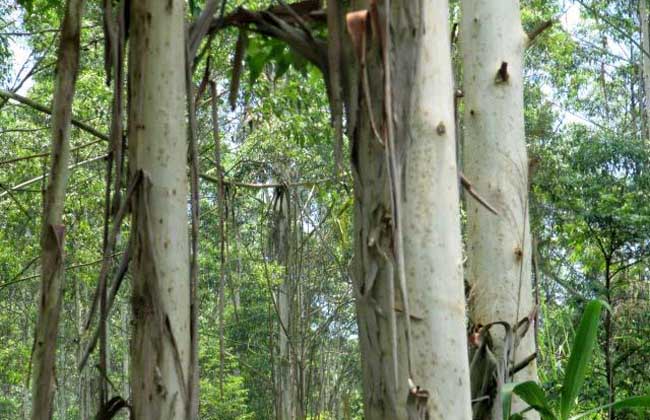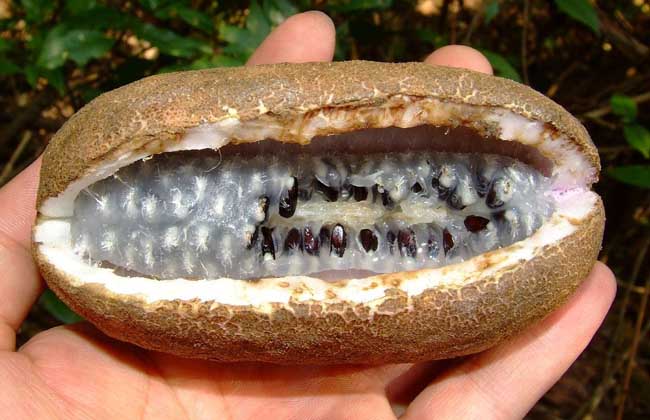How much is the price of eucalyptus seedlings?

Eucalyptus is a general term for the genus Eucalyptus of the myrtle family. The vast majority of its origin grows in mainland Australia and is born on sunny plains, hillsides and roadsides. Leaves can be picked throughout the year, and they can be cultivated in the south and southwest of China. Generally, they can blossom and bear fruit in 3 or 4 years after afforestation. It has a certain cultivation value. Let's take a look at the price of eucalyptus seedlings.
How much is the price of eucalyptus seedlings?
The general price of eucalyptus saplings is about 2-3 yuan, because it is a sapling, so the price is relatively cheap, evergreen four seasons store can sell, customer evaluation is high, quality is guaranteed, it is worth buying. Within 3-6 months after successful planting, the growth of the seedlings is still weak. in order to ensure that the seedlings can have sufficient light and nutrients, we should pay attention to remove weeds and avoid competing with seedlings for growth elements, and spring is the peak season for weed growth. Weeding is a must. At the same time, the loosening operation should be carried out in order to ensure the release of soil fertility.
Query on the harm of Eucalyptus
1. Question 1: eucalyptus is a "pump", which will drain water and cause drought. This is one of the most common questions about eucalyptus. Eucalyptus has a significant decline in groundwater due to its large transpiration, just like a "pump" causing land drought and water depletion. In this regard, the results of scientific research show that the water use efficiency of eucalyptus is quite high compared with other conifers, and the role of eucalyptus in water conservation, soil and water conservation and climate regulation is not inferior to that of other tree species. A large number of field observation experiments also show that eucalyptus does not directly cause drought. Data observed by scientist Bailly and others for eight years also show that most of the water in the big-leaf eucalyptus forest seeps into the soil and can effectively conserve soil and water.
2. Doubt 2: eucalyptus is a "fertilizer absorber", which will lead to "ground failure". Many people who have been to eucalyptus trees or have personally planted eucalyptus trees say that eucalyptus trees have a great demand for soil fertilizer and nutrients, but the fertility of the land planted with eucalyptus trees has declined or even dried up, and other plants reintroduced on the soil where eucalyptus trees have been planted cannot survive at all. In China, Bai Jiayu, a scientist who has been engaged in eucalyptus research for many years, found that eucalyptus has a more efficient ability to use nutrients than other tropical tree species by measuring the nutrient uptake of eucalyptus. In foreign countries, the scientist Liani also through the observation of eucalyptus soil found that eucalyptus in the rapid growth period, the nutrients absorbed during the period will be returned to the soil.
3. Doubt 3: eucalyptus is a "overlord tree", which will inhibit the growth of other species. It has been pointed out that eucalyptus has a great inhibitory effect on native, native and native species, and other species cannot live with it. Indeed, according to scientific common sense, alien species may cause harm to the native ecological environment. However, scientific research also found that almost all harmful exotic plants are herbaceous plants, while the ecological harmfulness of eucalyptus as trees has not been really confirmed. In addition, it is also a normal phenomenon in nature that some tree species are sensitive to the sap or rotten leaves of other tree species. This has been investigated in Leizhou Peninsula, Guangdong Province, and the results show that the plant diversity of the local forest has not decreased as a result of planting eucalyptus.
Common cultivated varieties of eucalyptus
1. Eucalyptus urophylla: Eucalyptus urophylla is a large tree, 25 meters high. Bark smooth, gray-white, long flaky. Twigs rounded, slender, pendulous. Young leaf blade ovate. Transitional leaves broad-lanceolate. Mature leaf blade narrowly lanceolate, slightly curved. Umbels axillary, peduncles stout. The buds are oval. Stamens; anthers longitudinally lobed, capsule subglobose. The country of origin is in the eastern coastal area of Australia, with the highest elevation of 1800 meters, which is commonly found in loam with sufficient precipitation. It is resistant to light frost in winter and is not suitable for acidic soil. Guangdong, Guangxi, Fujian, Guizhou, Yunnan and other places are planted, and the wood is pale. For construction, vehicles, ships, machinery, sleepers and so on.
2. Eucalyptus camaldulensis: Eucalyptus camaldulensis is the most widely distributed in Australia, which is distributed almost everywhere except desert and semi-desert. The more moderate condition is the zone below 250 meters above sea level, the annual precipitation is 250-600 mm, and there is only light frost habitat in winter. It is most common along rivers. It is also planted in a wide area in China, which is cultivated from South China to Southwest China. It is an ideal tree species with rapid growth and a certain degree of drought and cold tolerance. Red wood, strong corrosion resistance, suitable for sleepers and stakes.
3. Lemon eucalyptus: lemon eucalyptus is a large evergreen tree with a height of up to 40 meters and a breast diameter of 1.2 meters. Its stem shape is towering and straight, and its bark is smooth and white. It is known as the "fairy in the forest". Native to Australia, it has been introduced in China for nearly a hundred years, and it has been cultivated in South China, Fujian, Zhejiang, Yunnan, Sichuan and other places. Xiguang, with strong adaptability to climate and soil, drought tolerance, fast growth and high timber yield, is an important afforestation tree species in South China, which is suitable for afforestation in the lower part of southern hills, coastal mountains and four sides greening. At the same time, it is also an important fast-growing timber tree species and a good aromatic oil tree species in the south.
4. Eucalyptus: Eucalyptus angustifolia, also known as Eucalyptus urophylla, wind-blown willow, etc., originates from basalt and sandstone areas along the eastern coast of Australia to more arid areas in the interior, and is widely planted in South China. Afforestation experiments have been conducted on a large area in Leizhou Peninsula, Guangdong, and preliminary results have been achieved. The stem of the seedling is more buckled, and the sprouting stem is more straight after cutting and renewing. It is a commonly used tree species in afforestation in South China at present, but it is less resistant to wind and can not bear the attack of typhoon. The wood is reddish, hard and resistant to decay, and the leaves contain 0.82% oil.
Related
- A course of planting techniques and methods on how to grow carrots
- How to plant the latest tulips?
- Is it better to pick tea in the morning or in the afternoon? When is the best time for tea to be picked? what is the third or fifth tea?
- Launch Yuanxiao Happy combination Haocha + Tea Yuan healthy Taste
- Penghu Tourism "Fireworks 20 Parade with You"
- 2022 West Lake Happiness holds "Digital Revitalization Voucher" and draws iphone13 and laptop.
- Banqiao Fuzhou social houses are designed to change start-up combined with police elimination to create a safe and livable environment
- The convenient measure of "mechanical weeding" in Xinbei has been abused and the Agriculture Bureau has imposed heavy penalties on the illegal land consolidation.
- Changgeng University Joins Hands with Four Memory Factories to Rescue Memory Talent Shortage
- The list of Taiwan's top 100 MVP managers is listed by the Director-General of the Farmers' Association of Sanxia District.



